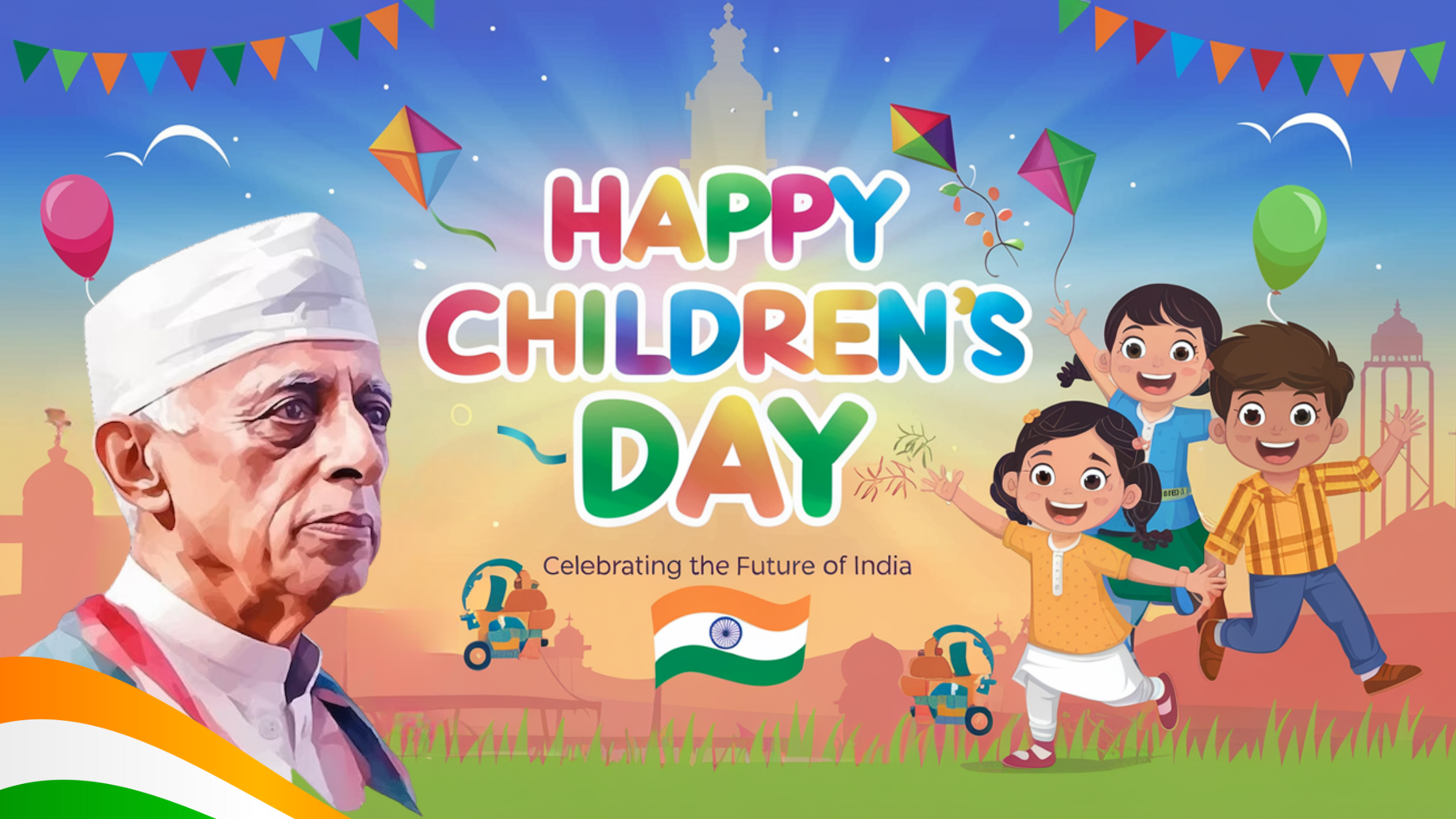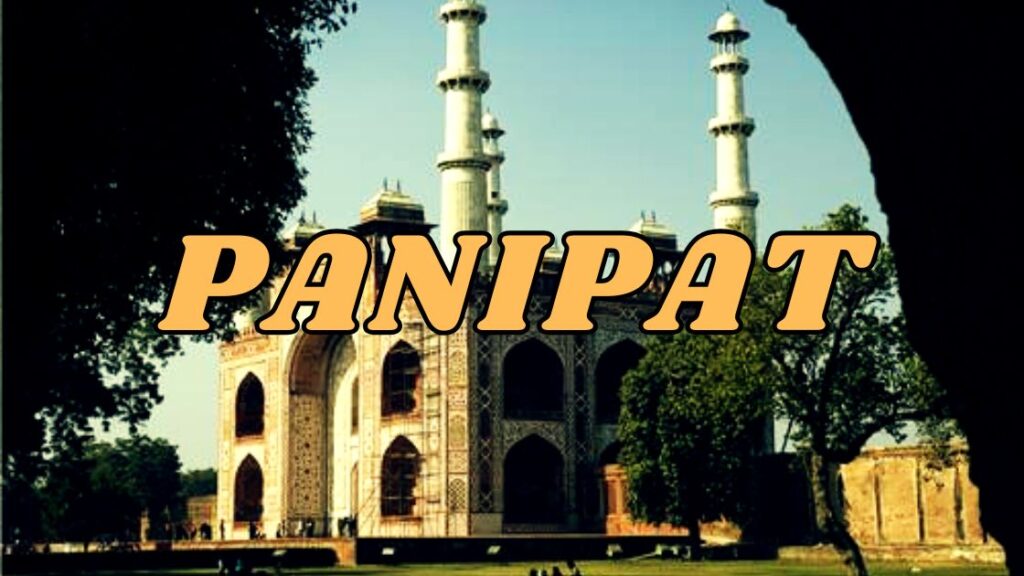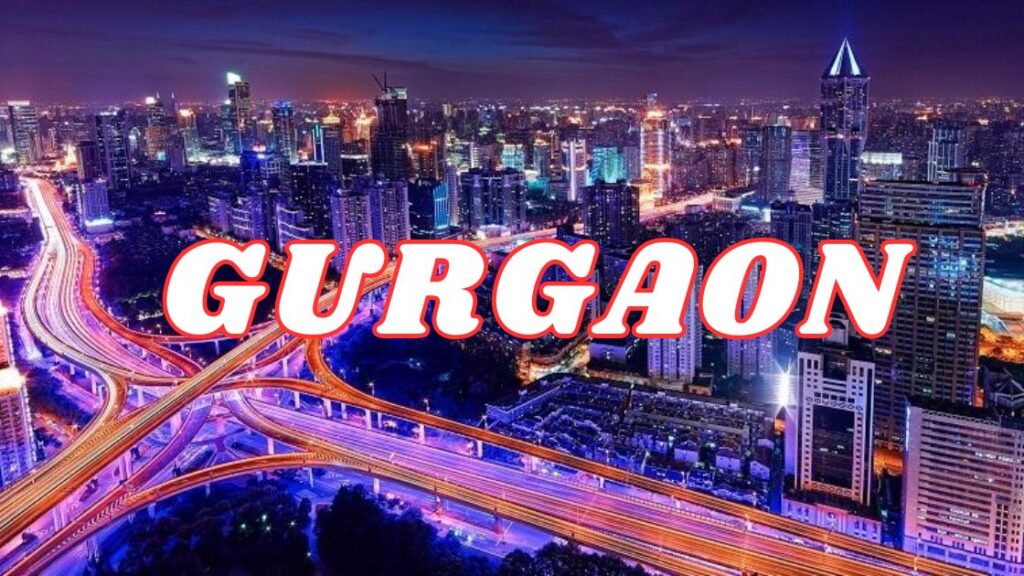Children’s Day in India: Celebrating the Future of the Nation
Children’s Day in India is celebrated annually on November 14th, coinciding with the birth anniversary of Jawaharlal Nehru, India’s first Prime Minister. Nehru, affectionately known as Chacha Nehru (Uncle Nehru), was deeply committed to children’s welfare, and his vision became the foundation of this important observance. The day highlights the importance of children in shaping the nation’s future, celebrating their rights, education, and well-being.
Historical Background of Children’s Day
The celebration of Children’s Day began in post-independence India with efforts to raise awareness about children’s rights and welfare. The significance of this day, marked on November 14th, traces its roots to the early 1950s. It became more formalized in 1954 after social welfare advocate V.M. Kulkarni suggested using Nehru’s birthday as a day to raise funds for child welfare initiatives.
Key Events of Children’s Day Celebrations in India
The Early Beginnings (1948-1950s)
In 1948, the Indian Council of Child Welfare (ICCW) organized the first fundraising event for children’s welfare. In 1951, the term Children’s Day began to gain popularity, thanks to increasing media coverage. It wasn’t until 1954 that Children’s Day became an official event in India.

Nehru’s Influence on Children’s Day
Jawaharlal Nehru’s association with Children’s Day is deeply personal. His profound love for children earned him the affectionate title Chacha Nehru, and his vision of India’s progress rested on improving the lives of children. He believed that children’s welfare, especially in terms of education and health, was crucial to building a stronger nation.
First Official Celebration of Children’s Day (1954)
The first official Children’s Day celebration took place in 1954 at the National Stadium in Delhi, with over 50,000 children in attendance. This event marked a pivotal moment in India’s focus on children’s welfare. The day emphasized that children are the nation’s future, with special events promoting child welfare.
Significance of the 1957 Commemoration
In 1957, the government formally declared November 14th as Children’s Day. The event featured the release of white pigeons, symbolizing peace and hope for children’s futures, along with the release of commemorative stamps.
Why Children’s Day is So Popular in India
1. The Fondness of Jawaharlal Nehru for Children
Nehru’s deep love for children made his birthday an ideal occasion to honor their importance. His affection and dedication to children made Children’s Day an emotional and significant observance across India.
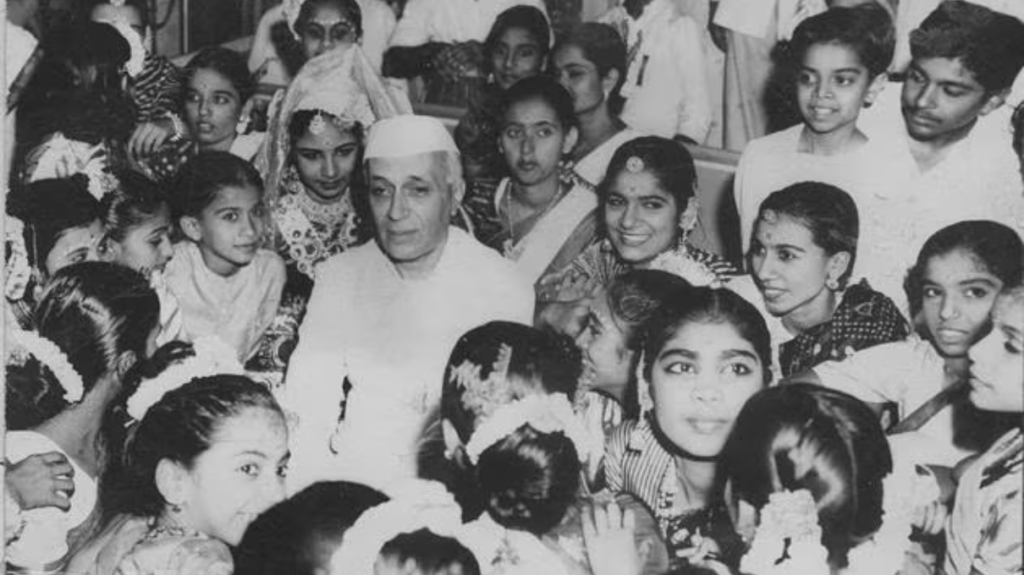
2. A Day for Children’s Rights and Welfare
Children’s Day serves as a reminder of the importance of ensuring the rights, protection, and welfare of children. It raises awareness about pressing issues like education, child labor, and malnutrition, helping reinforce India’s commitment to child welfare.
3. Celebrations and Events in Schools
In schools across India, Children’s Day is one of the most anticipated events. Teachers organize fun games, cultural activities, and competitions. Special treats and celebrations give children an opportunity to enjoy their day.
4. Involvement of Celebrities and Public Figures
Celebrities, public figures, and politicians engage in activities like visiting schools, delivering motivational speeches, and promoting child welfare initiatives, enhancing the day’s significance.
5. National and Cultural Significance
The celebration of Children’s Day transcends regional, cultural, and linguistic barriers. Events, including performances, dances, and plays, celebrate India’s unity and the cultural diversity that children represent.
6. Educational and Social Impact
Children’s Day has a strong educational focus, with workshops and discussions about children’s rights, health, and safety. It promotes awareness about social issues like child labor, child marriage, and education for all.
7. A Celebration of Innocence and Joy
Children’s Day also honors the innocence, joy, and potential of children. It is a day to remind society to respect, love, and care for children, emphasizing their crucial role in shaping India’s future.
How Children’s Day is Celebrated in India
Children’s Day, celebrated on November 14th each year, is a day dedicated to honoring the rights and welfare of children in India. This day marks the birthday of Jawaharlal Nehru, the first Prime Minister of India, who was deeply fond of children and believed in their potential to shape the future of the nation. While the celebration is primarily focused on the younger generation, it also serves as a reminder of the importance of ensuring children’s rights to education, health, and protection. Let’s explore how Children’s Day is celebrated across India.
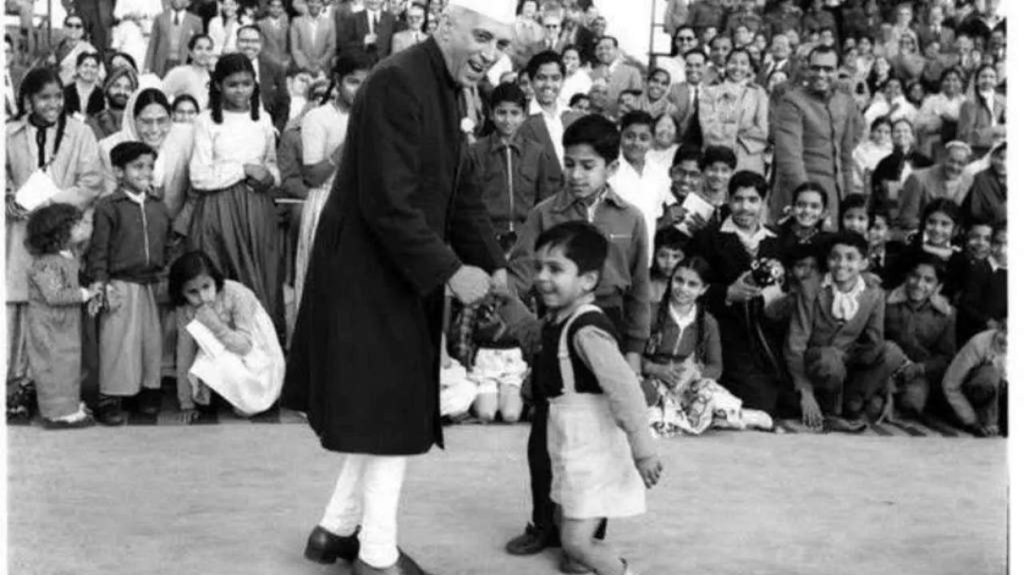
1. Special Programs and Activities in Schools
Schools across India are at the forefront of Children’s Day celebrations. For students, it is one of the most eagerly awaited days of the year. On this day, the atmosphere in schools is filled with excitement and joy. Teachers, who usually hold authority in the classroom, take on a more relaxed and fun-loving role, organizing a variety of activities and events specifically designed for children. Some common activities include:
- Cultural Performances: Students participate in various cultural activities like dance, music, drama, and poetry. These performances often reflect themes related to childhood, friendship, education, and Nehru’s vision for the nation.
- Games and Competitions: Many schools organize friendly competitions such as drawing contests, singing competitions, fancy dress competitions, and even sports events like races and tug-of-war. These activities encourage children to showcase their creativity and teamwork.
- Educational Events: On Children’s Day, schools often take the opportunity to organize motivational talks or workshops focused on raising awareness about children’s rights, welfare, and the importance of education.
- Speeches and Tributes: Some schools hold special assemblies where students, teachers, and even special guests give speeches to honor Jawaharlal Nehru and discuss his love for children. These speeches also include discussions about the importance of children’s welfare in building a better future.
2. The Role of Teachers and Educators
Teachers play a significant role in making Children’s Day special for students. Since November 14th is a day dedicated to children, many teachers turn the tables and organize events where students are the center of attention. Teachers often dress casually or participate in the events themselves, creating a more informal and enjoyable environment. This shift in roles helps students feel special and valued.
In many schools, teachers also prepare surprise gifts or treats for students. Some schools might provide refreshments, candies, or chocolates, making it a day of pampering for children. It is also a day when teachers engage with students in fun and light-hearted ways, which strengthens the bond between them.
3. Involvement of Celebrities and Public Figures
Celebrities, public figures, and politicians also actively participate in Children’s Day celebrations, which adds an element of glamour and excitement to the day. Many prominent personalities visit schools and children’s institutions to interact with students, give motivational speeches, and promote initiatives related to child welfare. These visits often make headlines, bringing greater attention to the importance of children’s issues.
- Television and radio channels frequently organize special programs or broadcasts to mark the occasion, featuring famous celebrities, singers, and actors performing for children or discussing topics related to childhood and education. The involvement of such personalities on Children’s Day creates a festive and memorable atmosphere for young audiences.
4. Government and NGO Initiatives
On Children’s Day, various government departments and non-governmental organizations (NGOs) focus on spreading awareness about children’s rights and welfare. These initiatives may include:
- Awareness Campaigns: NGOs, along with government organizations, conduct campaigns on social media, television, and radio, to inform people about the issues facing children today, such as child labor, child marriage, and access to quality education.
- Child Protection Activities: Many organizations work towards protecting children from exploitation, abuse, and neglect by organizing events that teach children about their rights and how they can protect themselves.
- Educational Programs: In collaboration with schools, various organizations conduct educational programs that highlight the importance of child education, especially for marginalized children. These programs often focus on empowering children and ensuring they have access to quality education.
5. Fun Fairs and Events
In some cities, Children’s Day is celebrated with fun fairs and exhibitions. Amusement parks and entertainment zones offer special discounts and events exclusively for children. These fairs often feature rides, games, and performances, allowing children to enjoy a day full of excitement and laughter.
Additionally, some schools and communities organize outdoor events like picnics or field trips, allowing children to enjoy a day away from the classroom. These outings provide children with the opportunity to connect with their peers, explore new places, and learn outside of their regular school environment.
6. Media and Television Specials
Television channels often air special Children’s Day programs and movies, specifically curated for young audiences. These programs may include animated series, children’s movies, educational shows, and documentaries that celebrate childhood. Special episodes of popular children’s TV shows are broadcast, and many shows are dedicated to spreading messages about child welfare, education, and empowerment.
The media plays a key role in engaging children on this day by featuring content that resonates with them and encourages positive values. Many of these programs are informative yet entertaining, capturing the attention of children while imparting valuable lessons.
7. A Day of Charity and Giving Back
Children’s Day is also a time for giving back to those who are less fortunate. Many individuals, schools, and organizations use this day to donate items such as books, clothes, toys, and other essentials to orphanages, schools in rural areas, and shelters for underprivileged children. This act of charity aligns with Nehru’s vision of creating a more equitable society where every child, regardless of their background, has access to basic needs and opportunities for growth.
Volunteers may also visit children in hospitals, providing them with gifts and spending time with them to brighten their day. This spirit of giving and sharing is one of the key elements that make Children’s Day truly special.
8. A Celebration of Children’s Potential
At its core, Children’s Day is a celebration of the immense potential of every child. The day emphasizes that children are not just the future but are valuable members of society today. Through a variety of activities, children are encouraged to express themselves, participate in cultural events, and showcase their creativity. The day is a reminder of the important role that children play in the nation’s growth and development.
Key Events of Children’s Day in India
Children’s Day, celebrated on November 14th, is one of the most important observances in India, honoring the legacy of Jawaharlal Nehru, the first Prime Minister of India, who was deeply fond of children. This day is marked by a variety of events across the country aimed at celebrating children’s rights, promoting their welfare, and honoring Nehru’s commitment to nurturing the next generation. Below are some of the key events that take place on Children’s Day in India:
1. Cultural Programs in Schools
Schools are the primary centers of Children’s Day celebrations. The day is filled with exciting activities designed to entertain and educate students. Cultural programs, such as dances, plays, and music performances, are organized in schools across the country. These performances often carry themes of childhood, national pride, and the importance of education and well-being for every child. Students actively participate in these events, showcasing their creativity and talent, making the occasion a lively celebration.

- Drama and Skits: Many schools organize plays and skits that reflect important social issues or highlight the values Nehru advocated for, such as unity, equality, and respect for children.
- Dance and Music Performances: Students showcase their dancing and singing talents through various performances, often revolving around childhood memories or Nehru’s love for children.
2. Special Assemblies and Speeches
In schools across India, special assemblies are held to mark Children’s Day. These assemblies are designed to educate students about the significance of the day, Nehru’s contributions to child welfare, and the importance of ensuring the rights of children. Special speeches are delivered by teachers, students, and guest speakers, which often include politicians, celebrities, and social workers.
- Tributes to Nehru: A common feature in these speeches is the tribute to Nehru, recalling his affection for children and his vision for India’s future.
- Awareness Talks: Teachers and invited guests speak about children’s rights, the importance of education, and the need to protect children from exploitation.

3. Fun Activities and Competitions
To make the day even more enjoyable, schools often organize fun competitions and activities. These events encourage students to participate in different creative and physical challenges, designed to build teamwork, creativity, and a sense of enjoyment. Some of the most popular activities include:
- Fancy Dress Competitions: Children dress up as their favorite characters, historical figures, or animals.
- Drawing and Painting Contests: Schools hold art competitions where children express themselves through visual art.
- Sports Competitions: Fun sports events such as races, relay races, and tug-of-war games are common, fostering physical fitness and camaraderie.
- Quiz Competitions: Schools organize quiz contests to test children’s general knowledge, history, geography, and current affairs.

4. Visits by Prominent Personalities
On Children’s Day, prominent personalities such as political leaders, celebrities, and social activists visit schools, orphanages, and children’s institutions. These visits help inspire and motivate children while highlighting the importance of child welfare. Such visits may include:
- Motivational Speeches by Celebrities: Celebrities encourage children to pursue their dreams, work hard, and value education.
- Visits to Orphanages: Political leaders and celebrities visit orphanages or homes for underprivileged children, bringing attention to the need for social reforms and the welfare of marginalized children.

5. Government and NGO Initiatives
Government organizations and NGOs take an active role in observing Children’s Day by launching campaigns that promote child welfare. These initiatives aim to raise awareness about the importance of child protection, child labor, and children’s rights.
- Awareness Campaigns: Government and NGOs run TV, radio, and social media campaigns to emphasize issues such as child marriage, child labor, malnutrition, and access to education.
- Distribution of Gifts and Scholarships: NGOs and government bodies distribute educational materials, gifts, and scholarships to underprivileged children, helping them access better opportunities.
6. Special Television and Radio Programs
Television and radio channels air special programs to commemorate Children’s Day, featuring content created specifically for children. These programs are designed to entertain, educate, and engage young audiences while encouraging them to contribute positively to society. Content may include:
- Children’s Movies and Shows: Special screenings of popular children’s movies or animated series create an entertaining environment.
- Educational Programs: Channels broadcast educational shows focusing on children’s rights, health, and development.

7. Charity Events and Community Services
Children’s Day is also observed through charity and community services. Many individuals, schools, and organizations use this day to give back to society by helping children in need. Some charity events include:
- Donations to Orphanages: Institutions donate books, clothes, food, and toys to orphanages, ensuring that underprivileged children have a happy day.
- Volunteering for Child Welfare: Volunteers visit hospitals, shelters, and schools in rural areas to organize special programs for children, such as recreational activities and gift distributions.
8. Release of Special Stamps and Memorabilia
In 1957, the Indian government issued commemorative stamps marking the first official celebration of Children’s Day. Since then, the issuance of special stamps, coins, and memorabilia on this day has become a tradition. These commemorative items serve as a reminder of the importance of children and their place in society.
- Postage Stamps: The Department of Posts often releases special postage stamps to mark the occasion.
9. Social Media Campaigns
In today’s digital age, social media has become a powerful tool for spreading awareness and engaging a wider audience. On Children’s Day, various government organizations, celebrities, and social influencers use platforms like Twitter, Instagram, and Facebook to highlight the importance of children’s welfare.
- Social Media Campaigns: Campaigns are launched to encourage people to share their thoughts on children’s rights, issues faced by children, and promote initiatives supporting children’s well-being.

Conclusion
Children’s Day in India is a day to celebrate children’s rights, their well-being, and their future potential. Through cultural programs, fun activities, visits by celebrities, NGO initiatives, and government campaigns, the day helps raise awareness and creates an environment where children are honored and empowered. These key events contribute to shaping the future of children and ensuring they grow up in a society that values their contributions.

